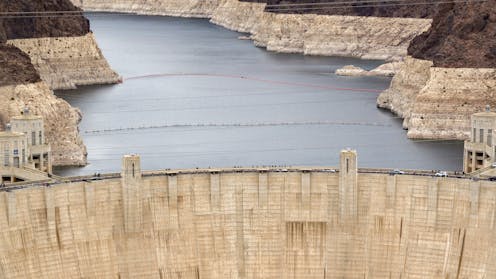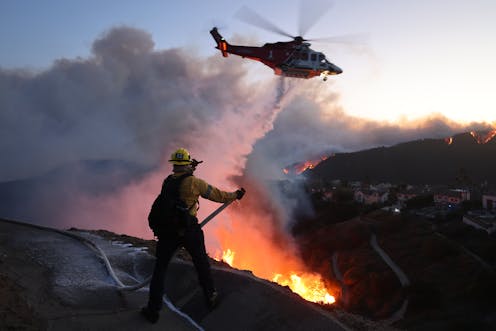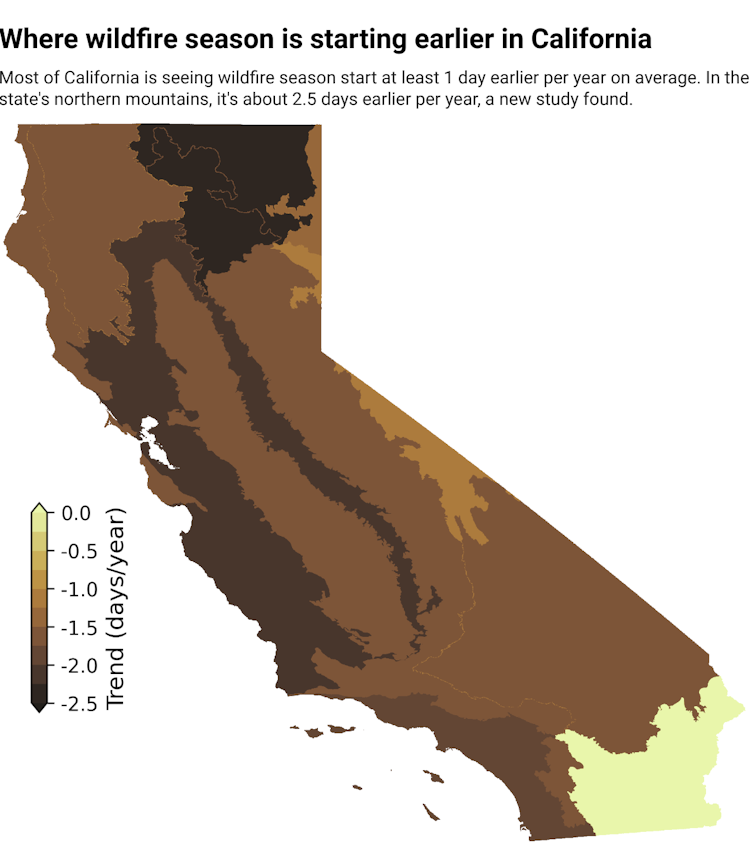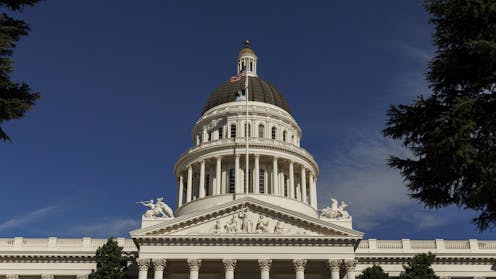Source: The Conversation – USA – By Mark Schlakman, Senior Program Director, Center for the Advancement of Human Rights, Florida State University

A July 2025 CBS/YouGov poll asked Americans, “Do you approve or disapprove of the Trump administration’s program to find and deport immigrants who are in the U.S. illegally?”
The respondents were divided, with 49% of Americans approving and 51% disapproving.
But, as I’ll explain, that survey question addresses only part of the administration’s immigration enforcement agenda.
I’m a lawyer and former adviser to senior state officials in Florida, and to the Clinton and George W. Bush administrations. I also teach human rights and national security courses at Florida State University, including an interdisciplinary seminar called Refugees, Asylees & Migrants.
Immigration issues are complex. Discussing them is challenging, since key terms are often conflated and confused.
Clarifying these terms and their legal implications can help ensure people are talking about the same things – regardless of whether they agree about who should be in the country.
Some key immigration-related terms
Let’s start with terms describing different aspects of immigration.
Immigrant is a common term meaning a foreign national who intends to remain in the U.S. or another country where they weren’t born.
Migrant is a generic term that doesn’t have any specific legal meaning and is often used incorrectly as a synonym for immigrant.
Immigrants are considered documented if they’ve been issued an immigrant visa or a green card, thereby achieving lawful permanent resident status. Green cards and visas can be revoked – typically a consequence of certain criminal convictions. Visas allow foreign nationals to travel to a U.S. port of entry and request permission to enter but do not guarantee entry.
A lawful permanent resident generally can apply for U.S. citizenship after five years. This process is known as naturalization. In fiscal year 2024, 818,500 people were naturalized.
Once naturalized, revocation of U.S. citizenship – or denaturalization – is rare, traditionally resulting from fraud, omission during the application process or other extraordinary causes. Between 1990 and 2017, about 11 people annually had their naturalized citizenship revoked.
The Trump administration is reportedly expanding the scope of denaturalization and is being called out for allegedly weaponizing it against current political adversaries such as Elon Musk. However, denaturalization numbers remain low. The first Trump administration filed 102 denaturalization cases, and his current administration has filed five so far, according to NBC News.
In May 2025 – a typical month representing some of the most recent data available – about 47,000 immigrants entered the U.S. with one of the many kinds of immigrant visas. For example, the visas may be used for family-based immigration, including legitimate marriages to U.S. citizens and international adoptions. Immigrant visas are also available for employment-based immigration, including foreign nationals who invest substantial capital in the U.S. economy.
An array of nonimmigrant visas
Apart from immigrant visas, a variety of nonimmigrant or temporary visas are available.
For instance, there are visas for international students, although the Trump administration has expressed its intention to significantly restrict availability.
There are visas to facilitate travel and tourism, business, temporary workers, and for those with extraordinary abilities or achievements.
There are special visas for victims of human trafficking and other crimes who assist law enforcement.
There are even visas to facilitate international sports competitions.
In fiscal year 2024, the U.S. issued a record 8.5 million visitor visas. Stays are generally limited to six months.
In addition, visitors from more than 40 countries are allowed to travel to the U.S for tourism or business for up to 90 days without obtaining a visa.
Significantly, a foreign national entering the U.S. with a visitor visa, also known as a tourist visa, isn’t authorized to work.
What it means to be ‘undocumented’
The term undocumented essentially refers to people who didn’t obtain a green card or a visa – or stayed in the U.S.
after their documents expired. An estimated 11 million undocumented immigrants live in the U.S.

Noah Berger/AP Photo
Visa “overstays” represent approximately 40% of the undocumented population. As a matter of law, such overstays are civil rather than criminal violations.
Attracting more political attention are foreign nationals who cross U.S. borders outside of an authorized checkpoint without asserting a credible claims for asylum. The Border Patrol recorded an historic high of 249,741 encounters with such migrants in December 2023. That figure dropped 77% by August 2024, according to a Pew Research Center analysis.
The Trump administration’s deployment of the U.S. military at the border has reportedly further reduced the number of encounters to the lowest level in decades, but questions regarding the legality of the deployment remain unanswered.
The Trump administration is also encouraging voluntary departure by offering travel assistance and $1,000 to illegal immigrants who self-deport.
Being undocumented can be legal
Being undocumented doesn’t necessarily mean a foreign national is in the U.S. illegally.
Some foreign nationals are admitted into the country without documentation. Asylum-seekers, also known as asylees, are people fleeing persecution in their home countries. They generally must present themselves to federal immigration authorities at a port of entry, or after entering the country by other lawful means, and eventually substantiate their claims.
The Trump administration’s action to ban asylum at the U.S.-Mexico border was recently limited by a federal appellate court. The court’s decision effectively curtails the administration’s practice of deporting people to places where they could be tortured or persecuted, subject to any further consideration by the U.S. Supreme Court.
Migrants escaping desperate economic circumstances are not eligible for asylum.
Refugees, like asylum-seekers, are fleeing a well-founded fear of persecution in their home countries and are protected under the 1951 Refugee Convention as amended by its 1967 Protocol. This identifies five forms of persecution for relief – race, religion, nationality, membership in a particular social group, or political opinion. In 1980, Congress passed and President Jimmy Carter signed the Refugee Act, which incorporated these international standards into U.S. law.
Unlike asylum-seekers, refugees apply for relief and substantiate their claims through the United Nations. They generally don’t get to choose whether or where they may be resettled.
Refugees and people granted asylum may seek lawful permanent resident status and eventually apply for U.S. citizenship.
In 2024, the U.S. accepted about 100,000 of an estimated 43 million refugees worldwide. Refugees are among the 122 million estimated to be forcibly displaced worldwide.
With limited exceptions, the Trump administration has suspended the U.S. Refugee Admissions Program and narrowed relief for women seeking protection from domestic and sexual violence in their home countries.
Humanitarian parole and TPS
Foreign nationals admitted into the U.S. as humanitarian parolees are undocumented initially, but their presence is authorized.
The federal government has historically used humanitarian parole to facilitate the admission of people from countries confronting significant violence or other compelling humanitarian crises when other processes are unavailable, overwhelmed or simply too slow.
For example, the U.S. launched a new humanitarian parole initiative in late 2022 to admit foreign nationals from Cuba, Haiti, Nicaragua and Venezuela.
Humanitarian parole also was used to admit foreign nationals following U.S. intervention in Vietnam and in Iraq after 9/11; after American troops withdrew from Afghanistan in 2021; and following Russia’s invasion of Ukraine.
Those granted temporary protected status, or TPS, by the federal executive branch are also believed to face extraordinary dangers if they return to their home countries. However, TPS can be granted only to foreign nationals who are already present in the U.S.
Generally, the federal executive branch has discretion to rescind both humanitarian parole and TPS, subject to certain rule-making requirements, if it concludes recipients can return safely to their home countries.
The Trump administration signaled its intent to terminate humanitarian parole and TPS broadly.
DACA recipients, or Dreamers, who arrived in the country without authorization as children, represent another protected category of undocumented foreign nationals legally living in the U.S. However, their status is uncertain due to ongoing litigation.
![]()
Mark Schlakman is Of Counsel to Rambana & Ricci, P.L.L.C., Immigration Attorneys, in Tallahassee, Florida.
– ref. Understanding key terms swirling around Alligator Alcatraz and immigration enforcement in the US – https://theconversation.com/understanding-key-terms-swirling-around-alligator-alcatraz-and-immigration-enforcement-in-the-us-261427
























